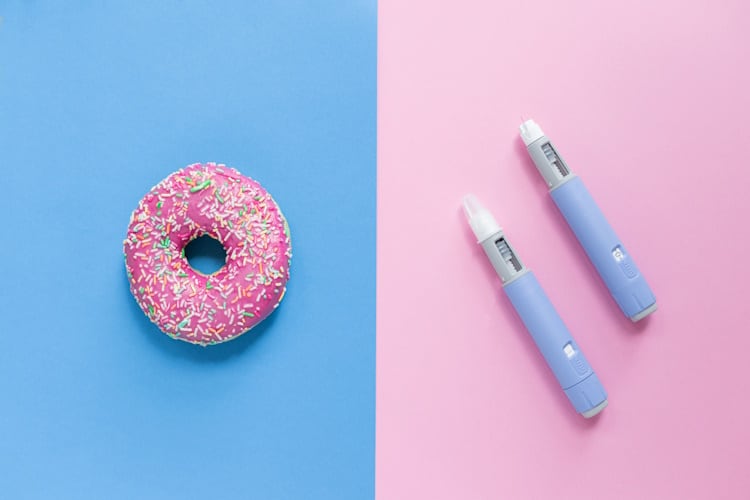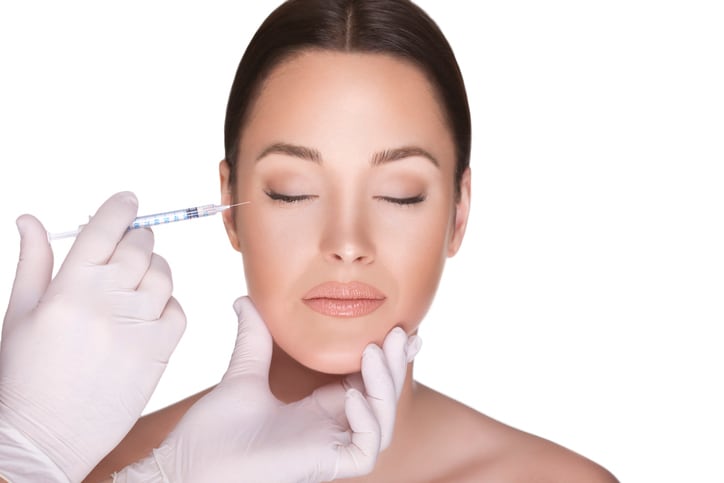At the recent Aesthetic & Anti-Ageing Medicine World Congress (AMWC), the growing numbers of people using of GLP-receptor agonist drugs such as Ozempic and Wegovy for weight loss was a hot topic.
GLP-1 receptor agonist drugs like Ozempic increase the levels of the hormones produced by the stomach when the user eats and helps the body produce more insulin when needed. Taking this medication also reduces the amount of glucose produced by the liver and slows down the pace of digestion.
People across the globe have rapidly lost huge amounts of weight while taking these drugs, however, it appears there are also less desirable, beauty-related side effects.
At a previous conference for the cosmetic dermatology and anti-ageing medical sector (IMCAS) in January, companies operating in the cosmetic dermatology space such as Galderma were vocal about how use of these drugs is changing people’s skin and facial structure.
As more research continues to emerge on this topic we spoke to plastic surgeon Dr Andreas Nikolis, about how and why this is happening and what experts are now recommending to counteract these effects.
Cosmetics Design-Europe (CDE): When someone loses weight via medication-driven weight loss what generally happens to their skin and facial appearance?
Dr Andreas Nikolis: The appearance of these individuals changes and this is partly due to accelerated ageing, partly malnutrition.
While on these drugs, people’s nutritional status is really affected; you don’t lose 60lbs in three months and expect everything to stay perfect. Put simply, when people lose weight on these drugs, the nutrients required for the fat that is needed for healthy skin is no longer there and the balance of skin health changes.
There’s a critical amount of fat that’s necessary for skin to look its best. If you have the ‘right’ amount of fat in your face, your skin is healthy and if you have too much fat in your face, your skin becomes inflammatory. Often when you look at patients who are overweight, their skin looks great because they have the ‘right’ amount of fat in their face.
The effects of rapid weight loss on the skin can worsen in a very short space of time, and although it is possible to improve it, this is a slow process. Because these individuals have lost a lot of fat, their skin changes are obvious. The fat essentially ‘held everything up‘ before.
On these drugs, the skin health itself and the collagen content has changed, the elasticity ability of the skin has changed and the structure of the skin becomes weaker. It’s an interrelationship between the fat and skin The hypodermis and the dermis itself.
It’s also very hard to predict how much someone will be affected in this way. Gender, age, their weight beforehand, and speed of which they lost weight will all affect the outcome. You know a 25-year-old has some resilience, for example, but for anyone, skin still needs time to maintain itself.
CDE: You spoke about this topic on stage at the AMWC conference on behalf of Galderma and you mentioned that injecting biostimulators like Galderma’s Sculptra can help counteract these changes. How does this help?
AN: By reversing that downhill slope of lack of skin health, and starting to build the skin back up slowly.
You have the structures of the skin the epidermis, dermis, and then the fat, which are all like little armies, pushing and building. These are all intermarried internally and when you stimulate fibroblasts with a biostimulator you’re building the dermis and the skin becomes tighter and stiffer.
We are also finding that the biostimulators are stimulating the mechanisms involved in fat cells and some of those mechanisms are stimulating specific growth factors that have a secondary benefit.
When using these biostimulators, the collagen is better, elasticity is better, hydration is better and barrier function of skin improves.
It takes time to stimulate collagen, so ideally I would want to start treatments in the first month, at the latest within the first three months, because it’ll take time to start building the collagen.

CDE: In late March you had research for a Delphi study published in the Journal of Cosmetic Dermatology on this topic. Can you tell us more about this please?
AN: As this topic is still fairly new and we’re now seeing these patients who have evolved after their weight loss journey, we needed an international consensus and ethical guidelines to help us manage this.
For this, we spoke to industry experts that have seen a high volume of these particular patients and we had a consensus on every detail of this.
We identified the anatomy of these patients. The main structure of their skeleton does not change because bone takes a long time to change, but the soft tissues are changing and we know that the skin changes, the superficial fat changes, the ligaments change in position, and the muscles change a little bit because when you lose protein because you’re not eating as much, this happens. You don’t usually see it as much in the face because the muscles aren’t as big.
All these changes are happening, so we talked about, what to do next. So when do we start treatment? The consensus statement was that it’s best to treat people as early as you can because the sooner you start, the easier it is to reverse the side effects on skin.
Our consensus statement demonstrates that if you’re lucky enough to catch a patient as they’re starting the medications, you can start within the first couple of weeks they are taking it, because it takes six to eight weeks to start seeing the results.
We also highlighted that we all need to remember that these patients usually have one fear: appearing like they have regained the weight again.
Right up until their weight stabilises, we need to look at them as unique patients each time they come in to see us because of the changes in their physiology and their weight and their facial platform components.
Once their weight stabilises, but they are still on the medication, we can create more of a routine in their treatment because they’re not changing. However, the problem is that once they stop their medication, there is a proportion of the patients who will regain that weight.
This means that the majority of these patients also have to learn about diet and exercise and change their lifestyle, too, which means we need a holistic approach.





